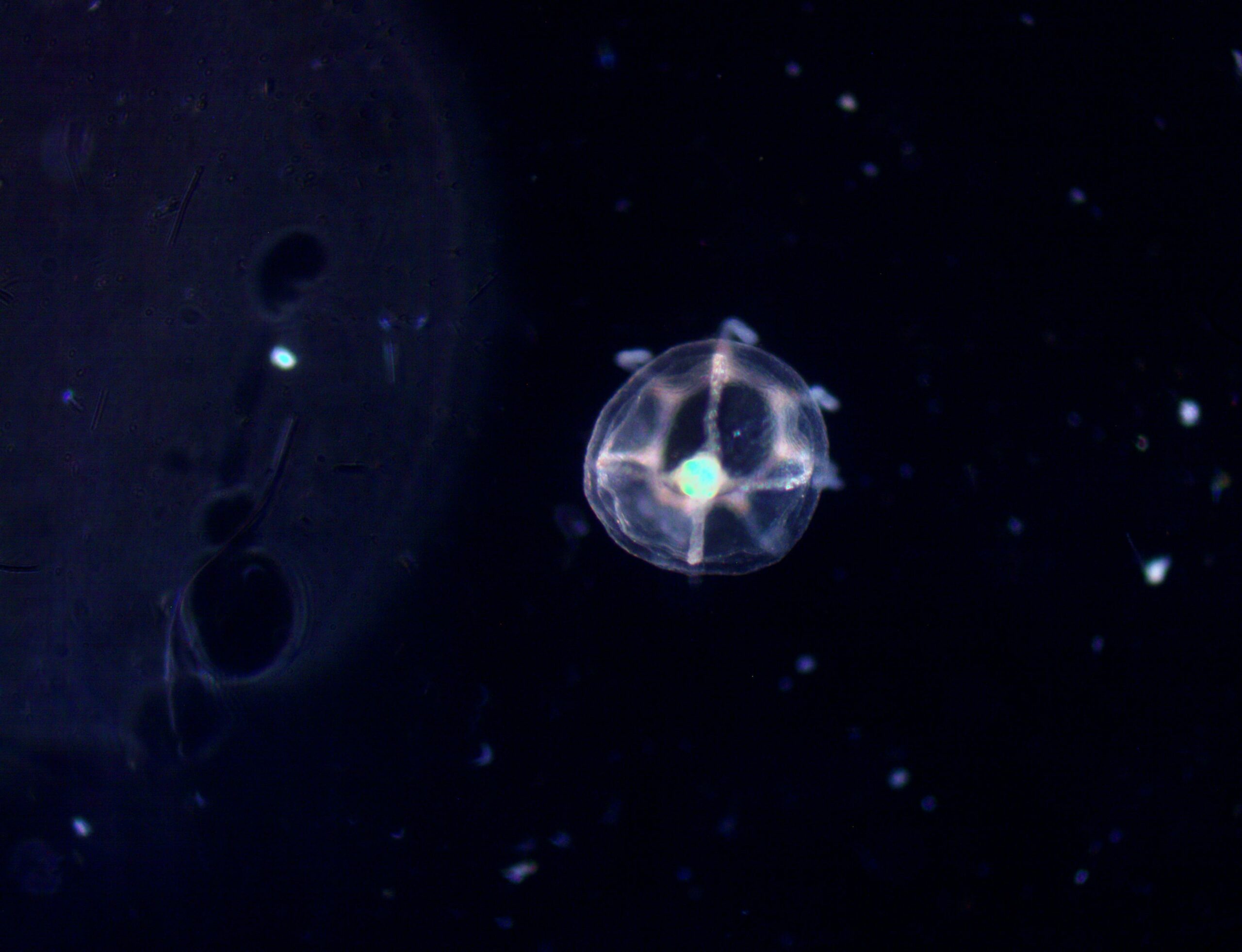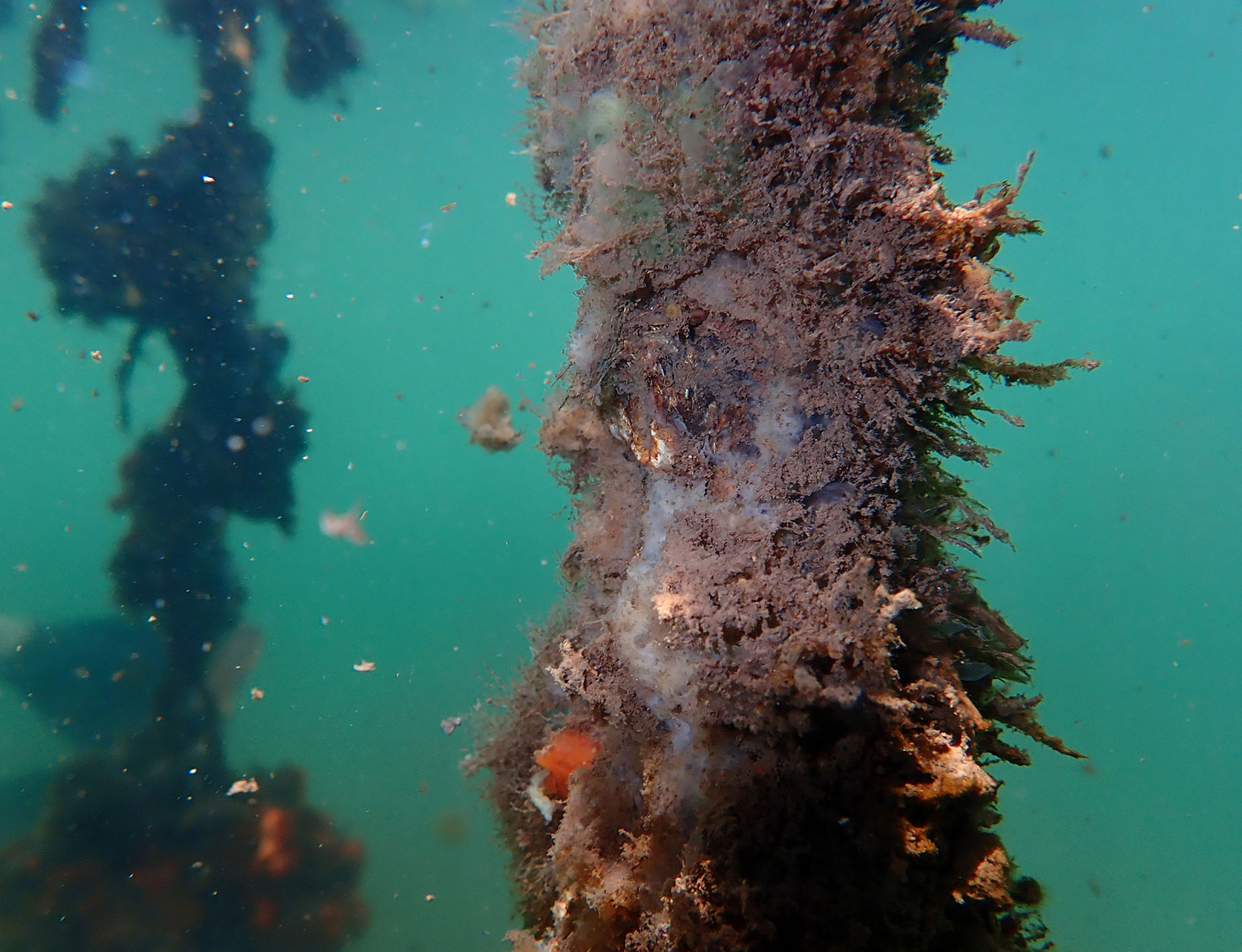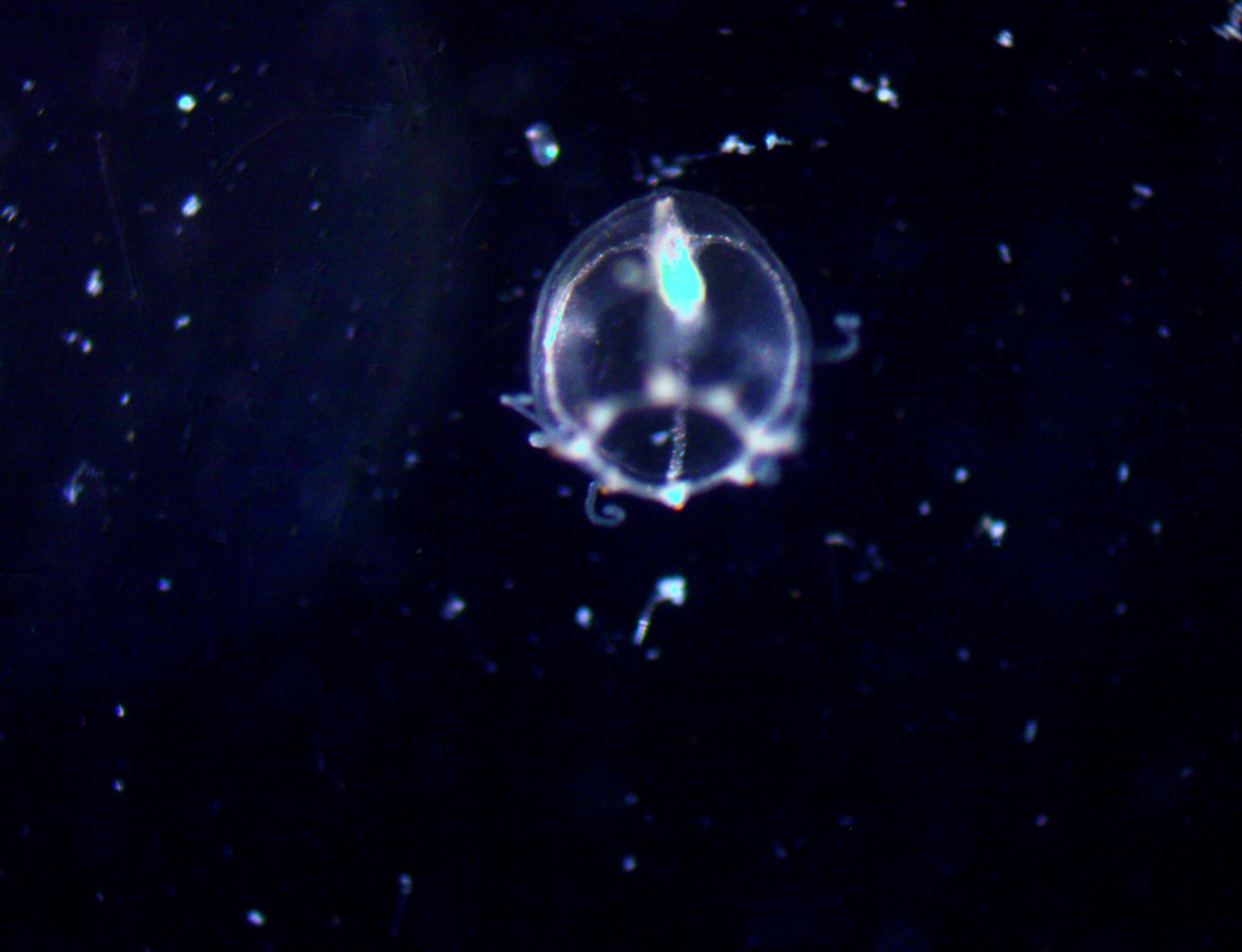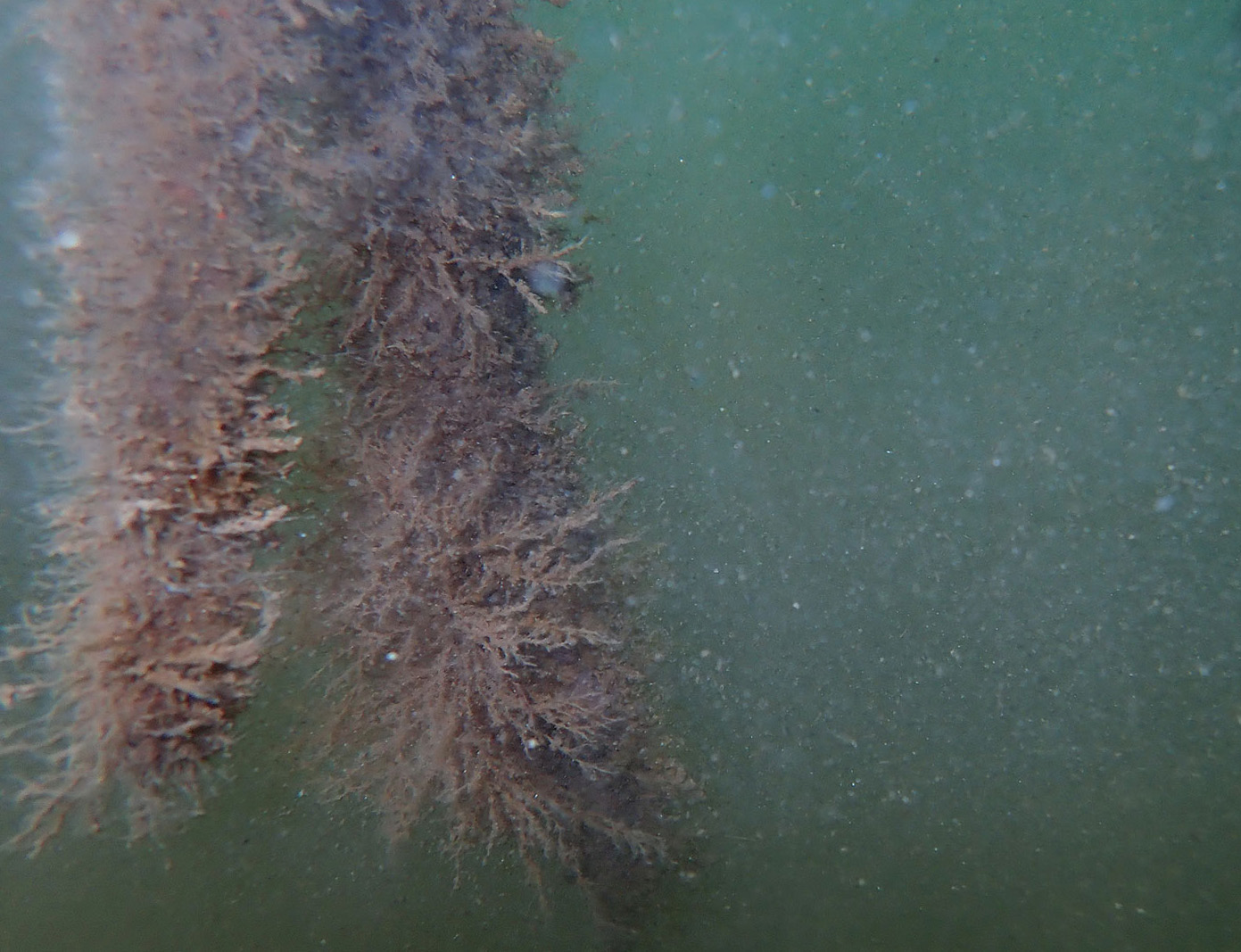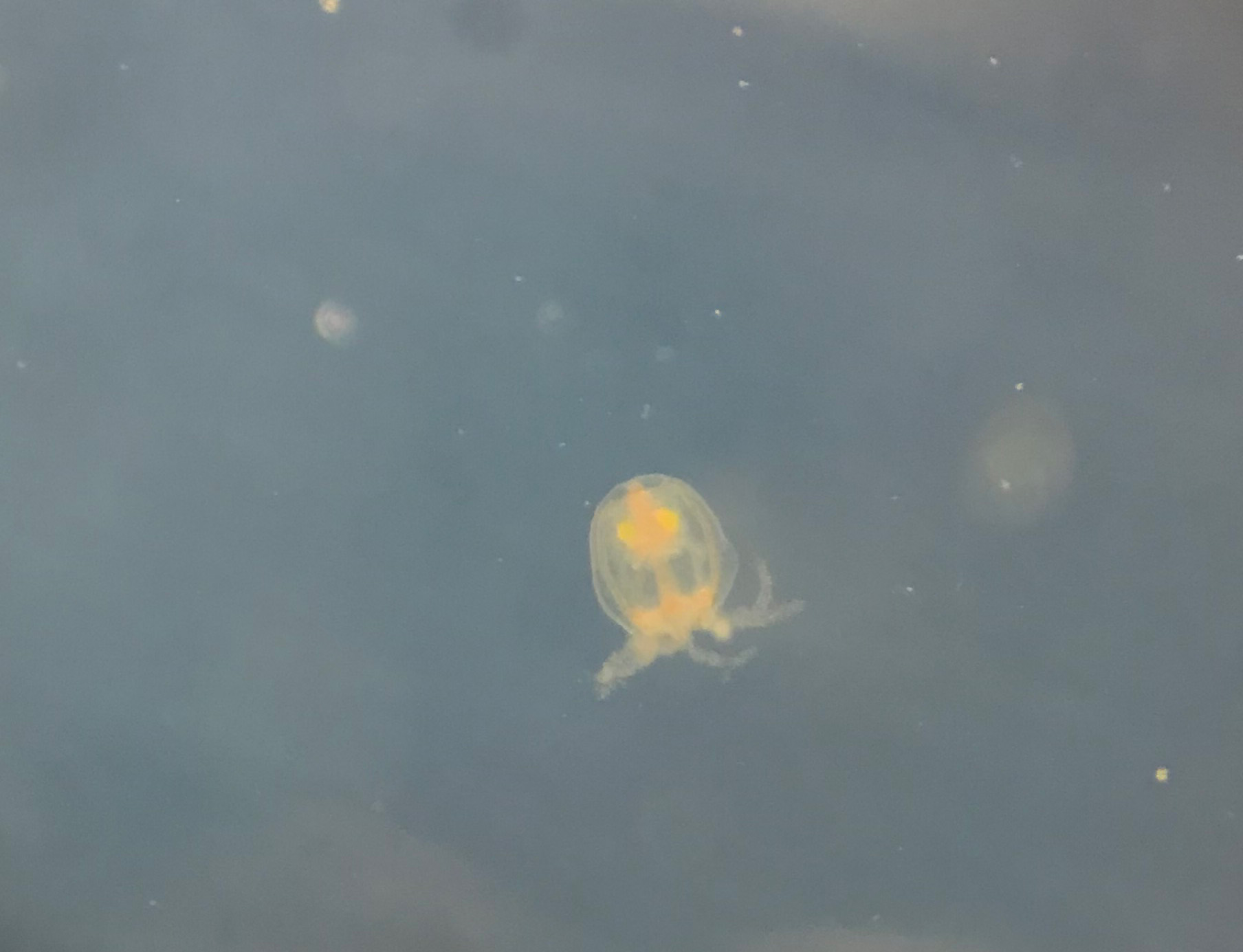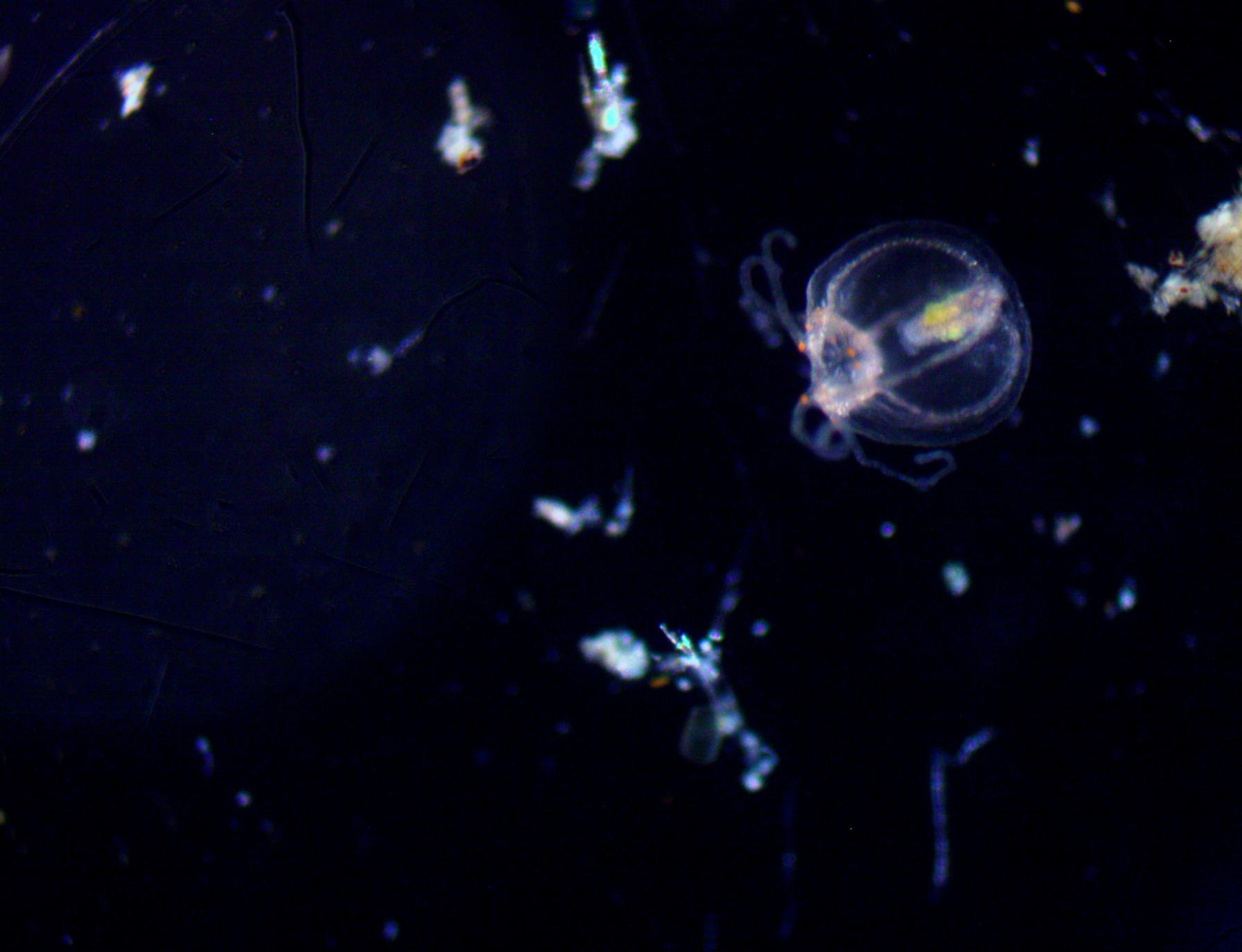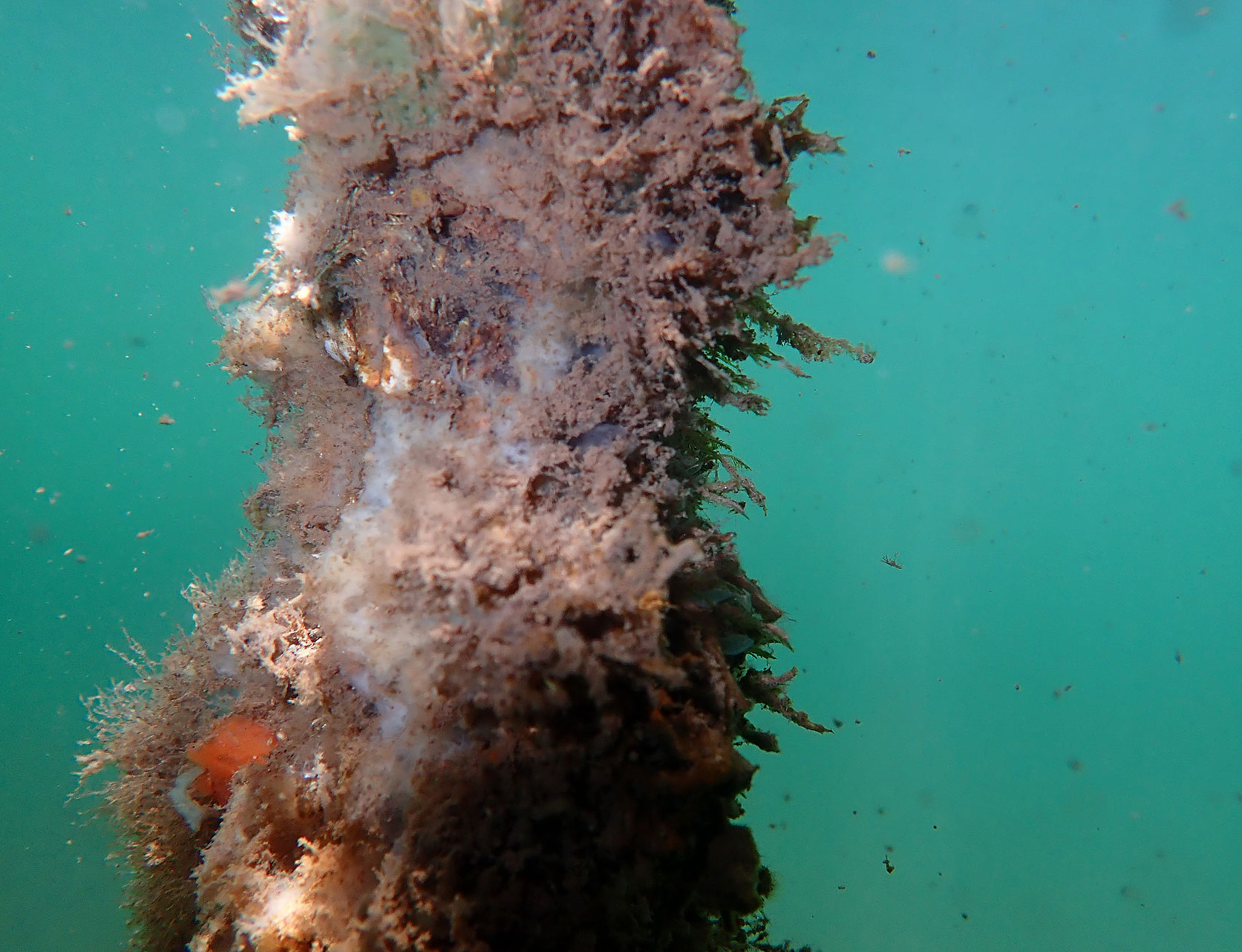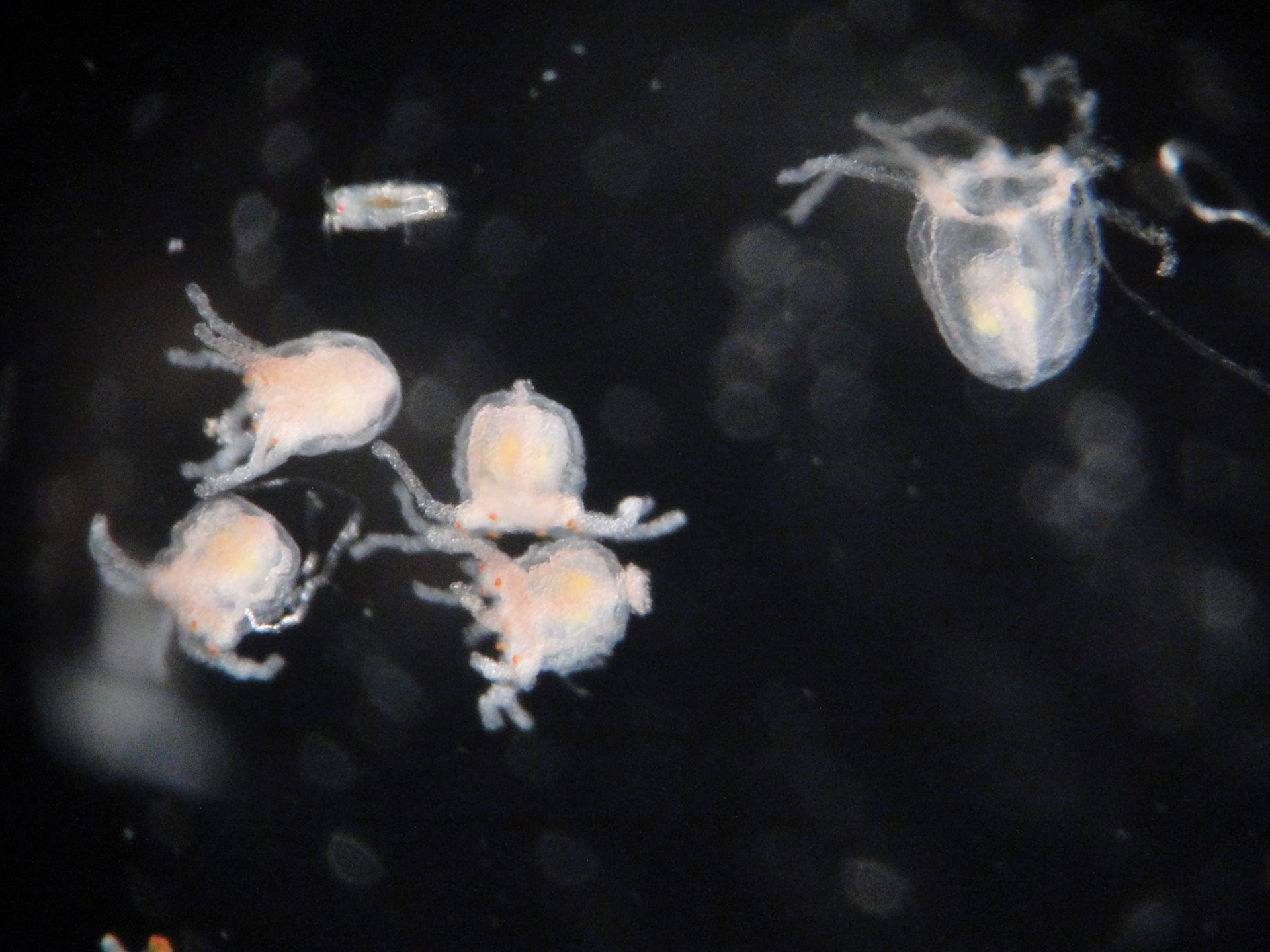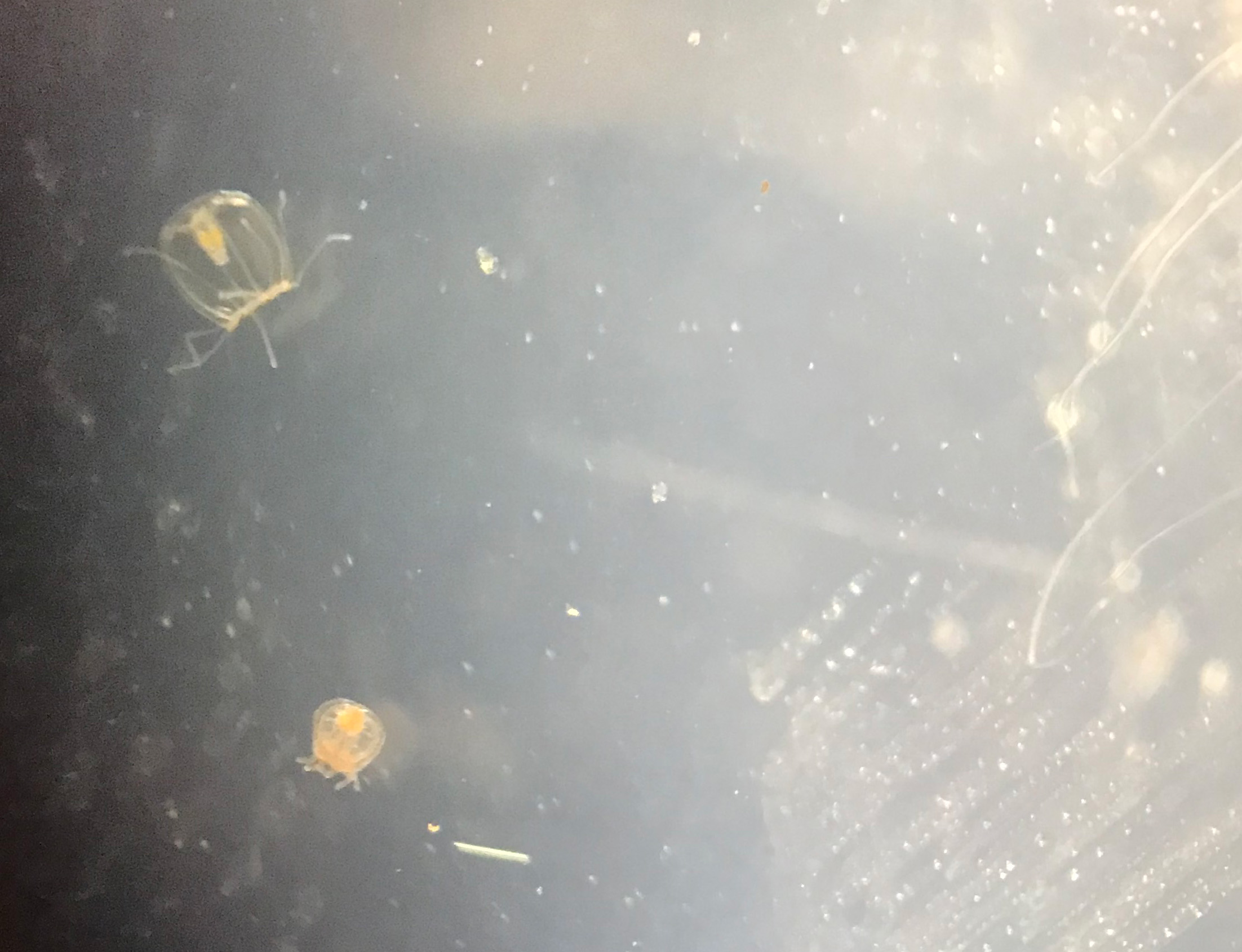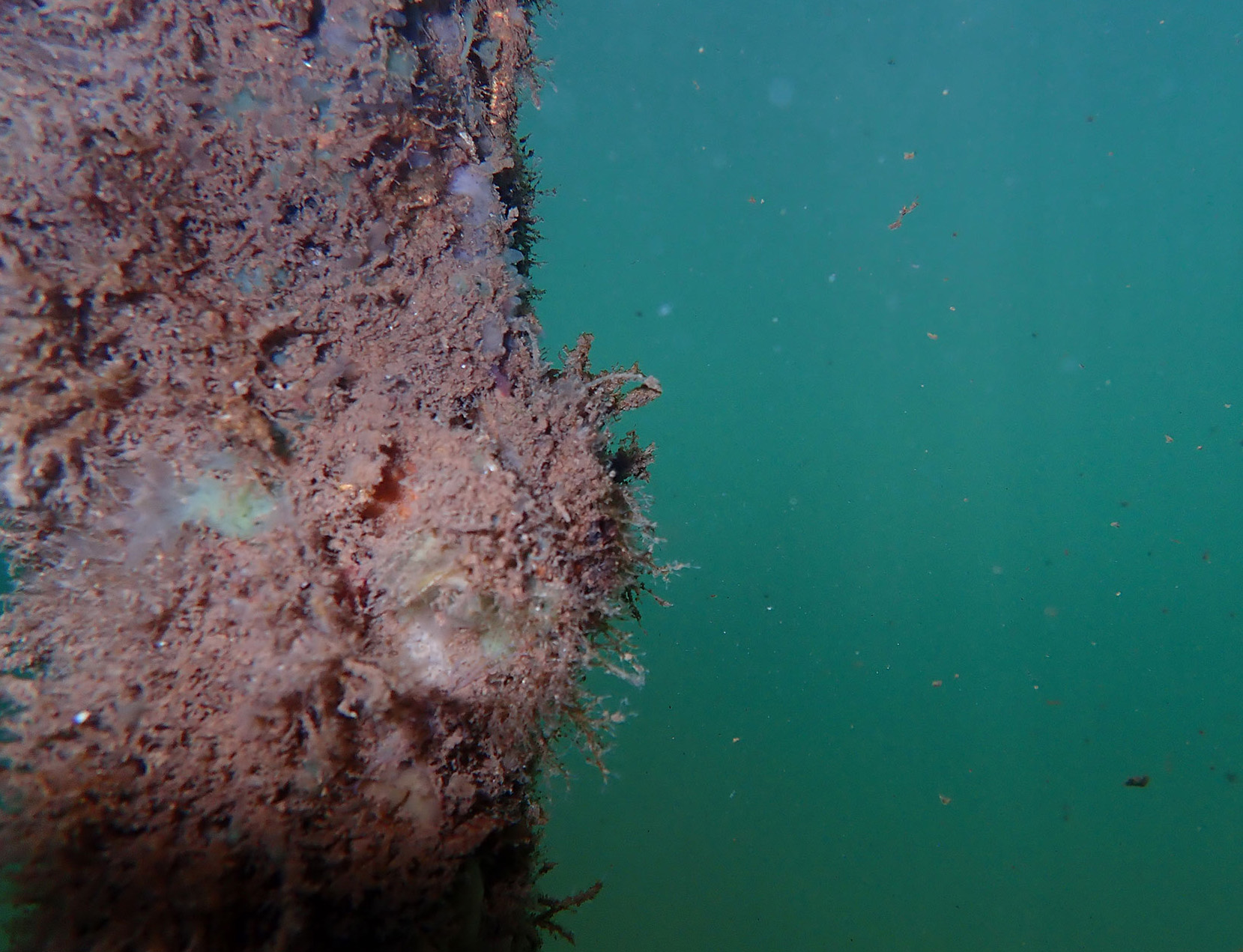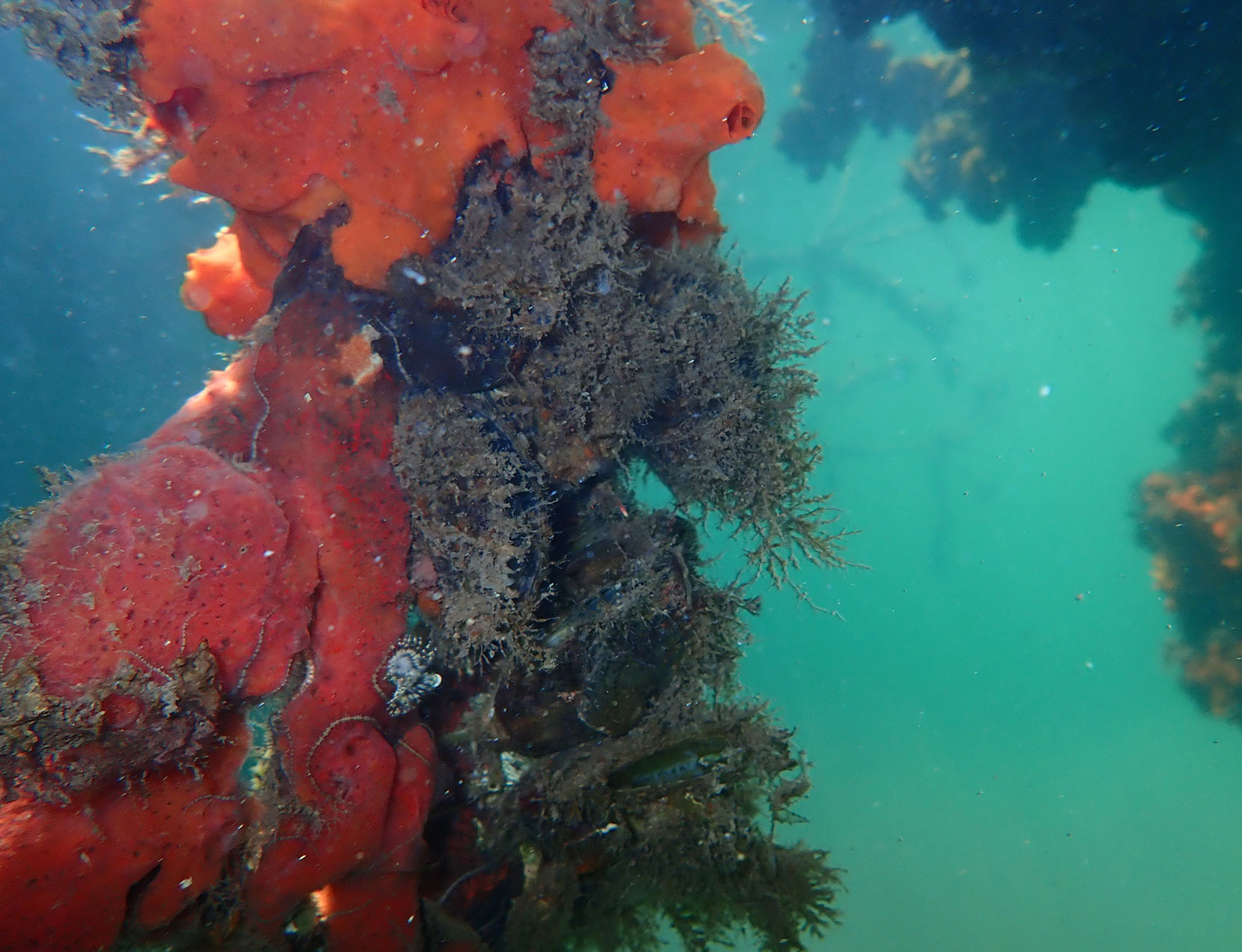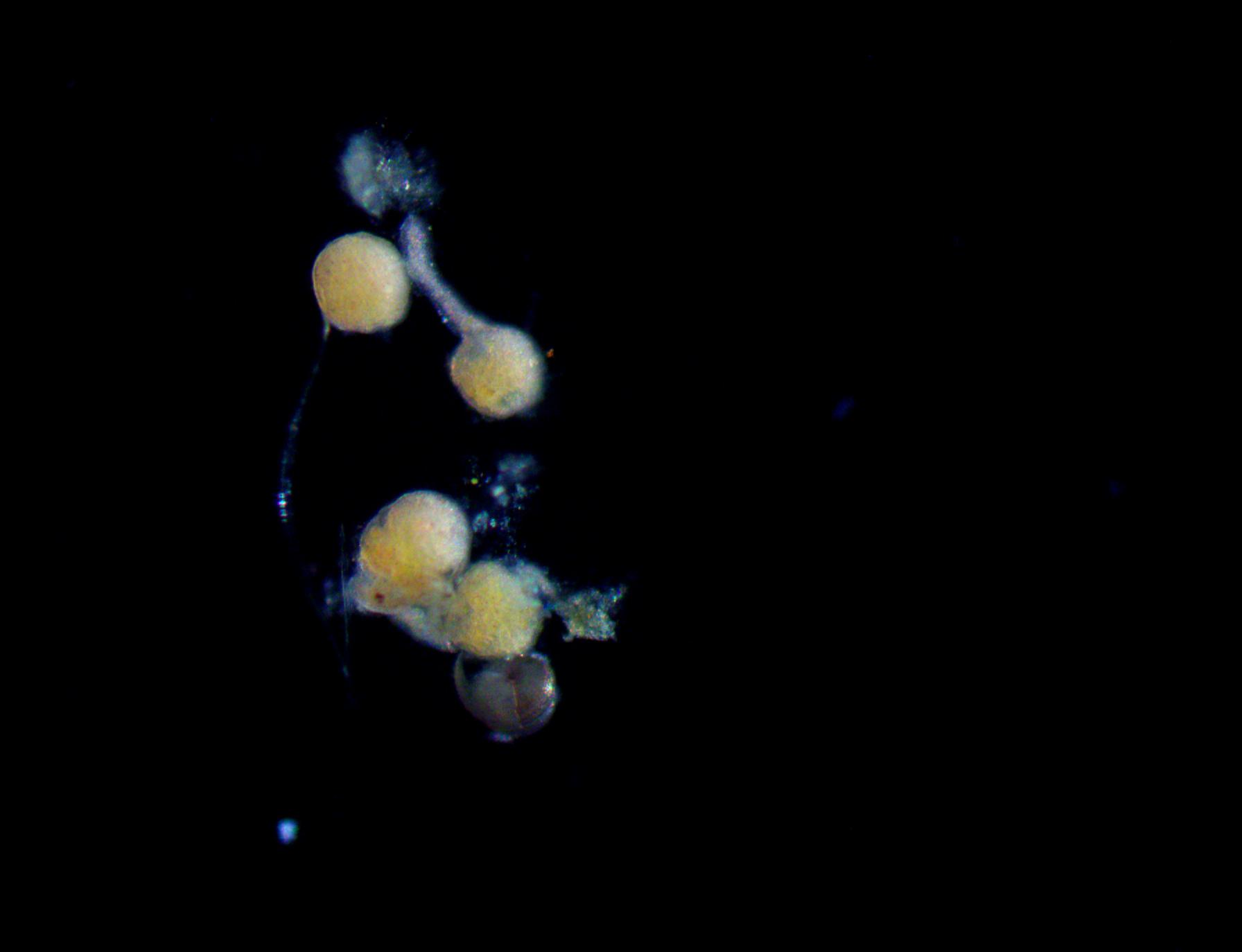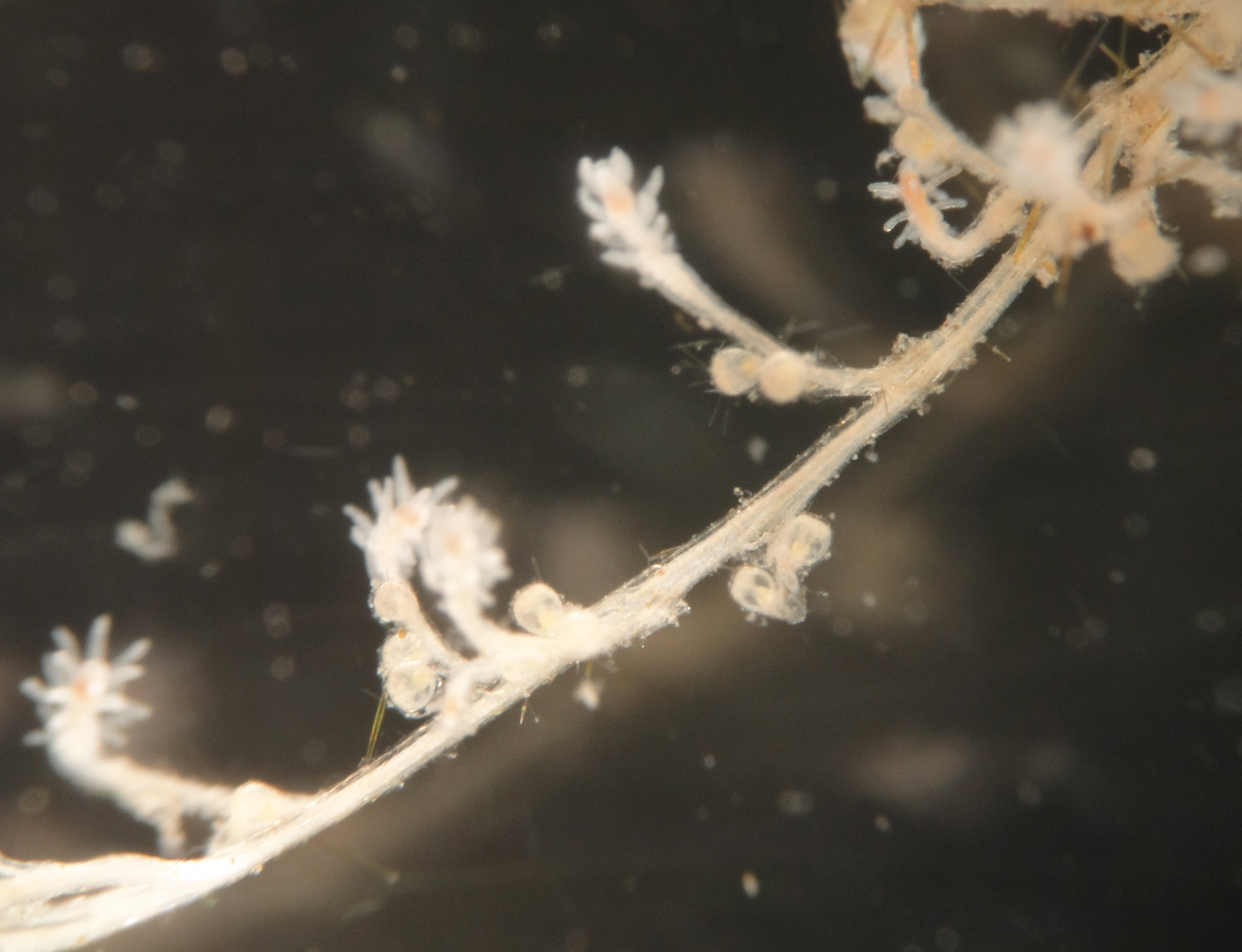Turritopsis dohrnii
The Life Cycle of the
Immortal Jellyfish
BIOLOGY
Turritopsis dohrnii (the immortal jellyfish) belong to the phylum Cnidaria along with other jellyfish, corals, anemones, and sea pens. The distinguishing feature of the phylum Cnidaria is cnidocytes, stinging cells that play a role in capturing prey and providing protection from predators. Among the phylum Cnidaria, the immortal jellyfish belongs to the class Hydrozoa. Hydrozoa’s distinctive feature is a complex life cycle that alternates between the benthic polyp and the planktonic medusa (jellyfish). Turritopsis dohrnii adds unique features to this already complex life cycle.
LIFE CYCLE
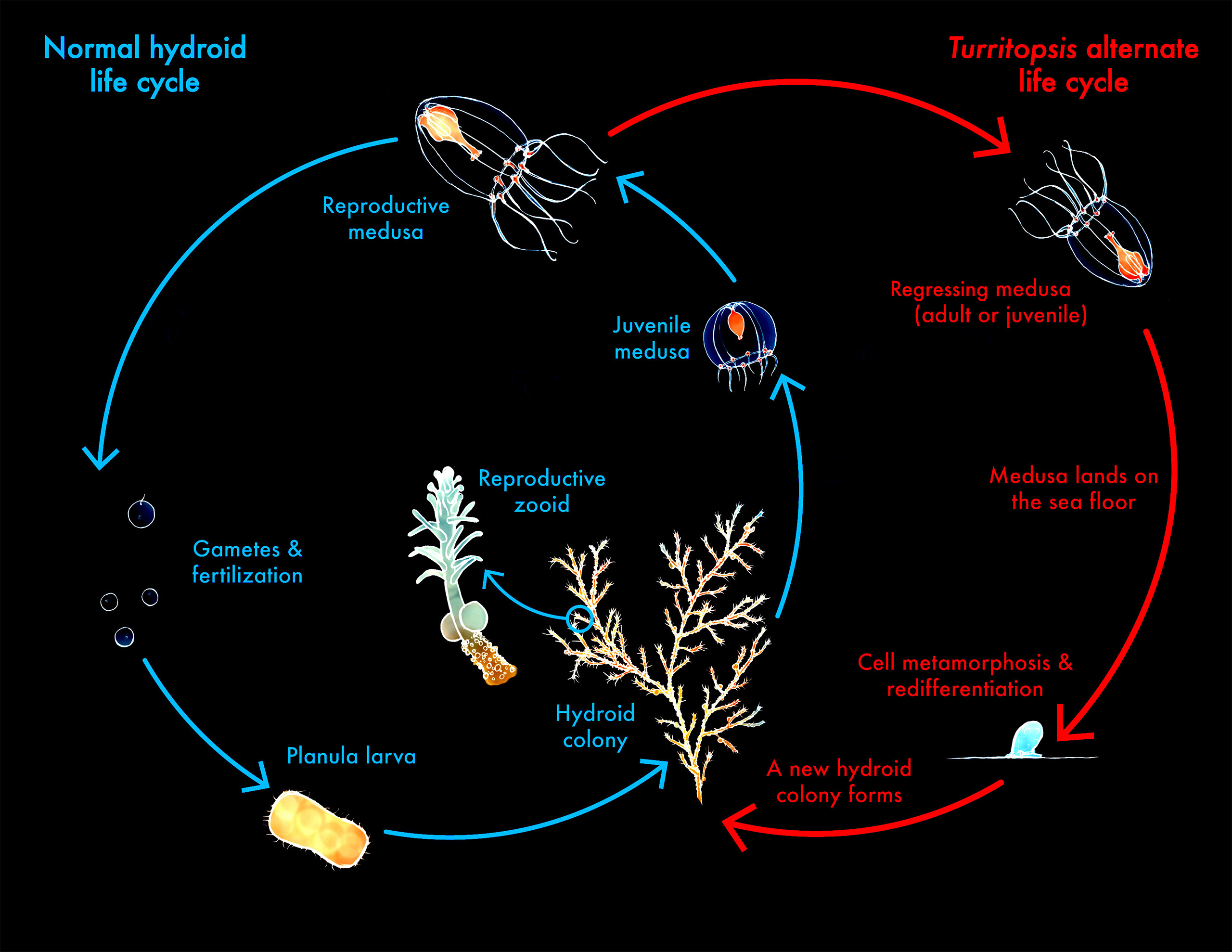
Science Illustrator: Meghan Rocktopus
The immortal jellyfish starts its life cycle as a planula, a mobile larva that actively swims and settles on a surface. The settled planula will then develop into a single polyp, which will grow into a colony by asexual reproduction. Once large enough, the colony will produce and release many identical newborn jellyfish (also known as the medusa). The newborn jellyfish will become adults, release their eggs or sperm into the water column, allowing external fertilization to produce more planula. Jellyfish of T. dohrnii, when faced with unfavorable conditions (starvation, or physical damage, for example) will, instead of dying, settle onto a surface and metamorphose back into a single polyp, passing through an intermediate stage, the cyst. This process is called reverse metamorphosis. During T. dohrnii’s reverse metamorphosis, cellular transdifferentiation occurs.
ECOLOGY
Turritopsis dohrnii lives in shallow waters around the world. Described from Italy in 1883. Its unique life cycle was described for the first time by Bavestrello et al., in 1992. T. dohrnii has now been recorded in several locations around the world (Miglietta and Lessios 2009, Miglietta et al. 2018). T. dohrnii is now considered a world- wide marine introduced species, spreading its geographical range, possibly through ship ballast water. T. dohrnii medusae look different depending on the region where they are collected (tropical vs temperate), with tropical medusae showing only 8 tentacles during the entire life cycle, while temperate medusae having up to 24 tentacles. So far T. dohrnii has been found in the Mediterranean Sea, Japan, Pacific and Atlantic coasts of Panama, Brazil, Gulf of Mexico, Turkey, and California (Miglietta et al. 2018).
T. dohrnii has been extensively studied in Bocas del Toro Panama, where it co-occurs with two local species (Turritopsis sp. 4 and T. sp. 1). In the latest survey conducted by the Miglietta laboratory, while the introduced T. dohrnii was found to be abundant, T. sp. 1 was rare, and T. sp. 4 absent (Miglietta et al. 2018)
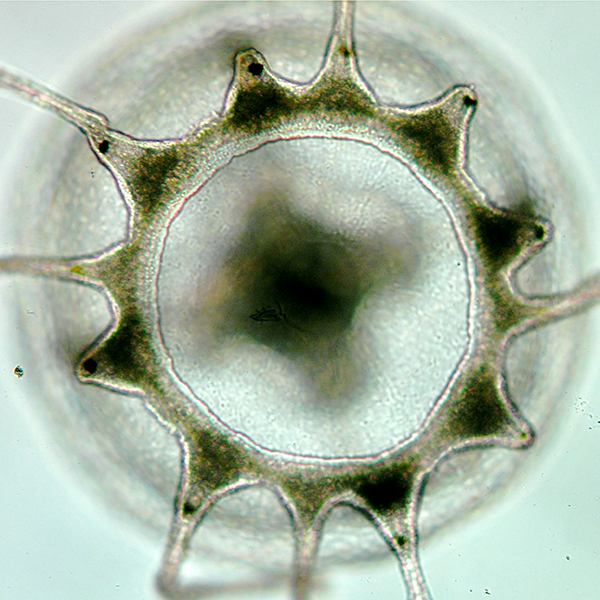
Medusa – Tropical Region
Image by: M. Miglietta
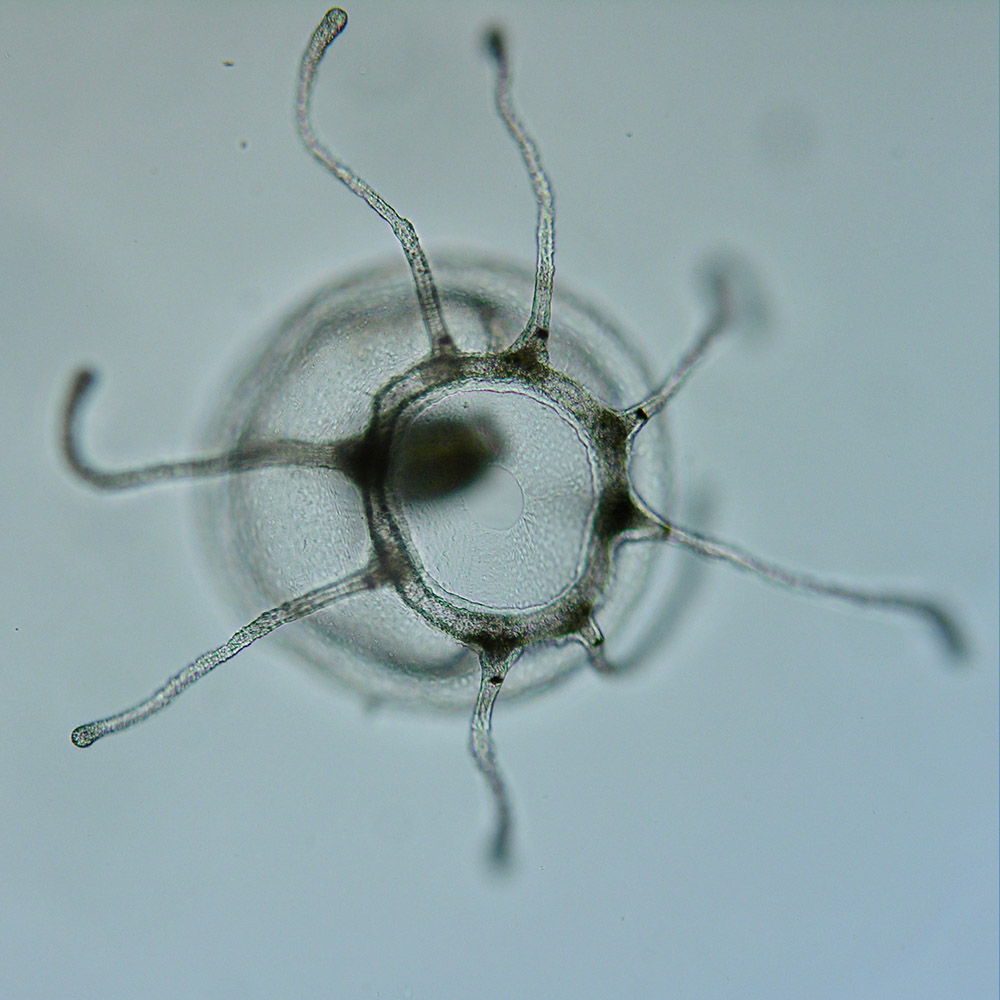
Medusa – Temperate Region
Image by: M. Miglietta
GENOME STUDY
During T. dohrnii’s reverse metamorphosis, cellular transdifferentiation (cellular reprogramming) occurs. Transdifferentiation is a process in which a mature somatic cell transforms into a new type of mature somatic cell. Most of what we know about transdifferentiation comes from in vitro studies. The mechanisms and molecular drivers by which cells spontaneously (in vivo) leave a differentiated state to become a new lineage are poorly understood in large part, because of the difficulties of inducing transdifferentiation in live model systems.
Additionally, because transdifferentiation in traditional model systems takes place over weeks, modeling its underlying gene regulatory network is problematic.
Because reverse development occurs in 48-72 hours and can be induced under laboratory settings, T. dohrnii represents and ideal system to study the genetics underlying cellular transdifferentiation at large.

